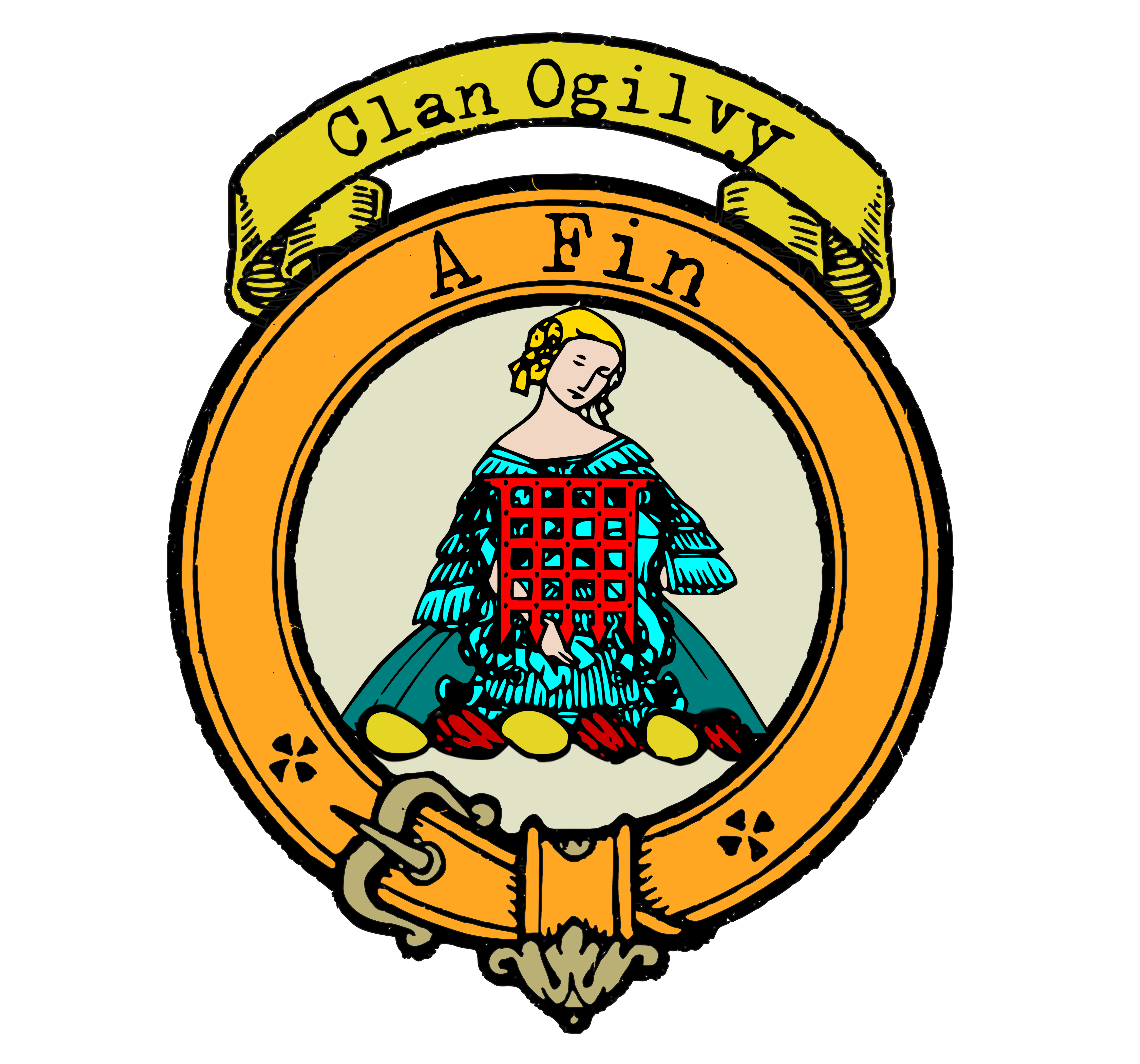Clan Ogilvy
|
|
CREST: A lady affrontée from the middle upwards Proper in Azure vestments richly attired holding a portcullis Gules MOTTO: A fin TRANSLATION: To the end VARIATIONS: Ogilvie |
 The lands of Ogilvy are nestled in the heart of Angus, a region with a storied past. The name “Ogilvy” is believed to trace its roots to the old British words “Ocle-fa” or “high plain,” a fitting descriptor for the clan’s ancestral home. It was in Angus that this noble clan’s journey began.In ancient Pictish times, Angus was a kingdom ruled by mormaers, Celtic nobles of Scotland who would later become the first earls. The title of Mormaer of Angus eventually evolved into the Earls of Angus. Gillebride, Earl of Angus, bestowed the lands of Ogilvy upon his son, Gilbert, marking the clan’s establishment in the region, which took place before 1177. The lands of Ogilvy are nestled in the heart of Angus, a region with a storied past. The name “Ogilvy” is believed to trace its roots to the old British words “Ocle-fa” or “high plain,” a fitting descriptor for the clan’s ancestral home. It was in Angus that this noble clan’s journey began.In ancient Pictish times, Angus was a kingdom ruled by mormaers, Celtic nobles of Scotland who would later become the first earls. The title of Mormaer of Angus eventually evolved into the Earls of Angus. Gillebride, Earl of Angus, bestowed the lands of Ogilvy upon his son, Gilbert, marking the clan’s establishment in the region, which took place before 1177.
The Ogilvies played their part in Scotland’s tumultuous history. In 1296, Patrick de Ogilvy’s name appeared on the Ragman Roll, a record of nobles who swore fealty to Edward I of England. This document sheds light on the complex political landscape of the time. During the fourteenth and fifteenth centuries, the Ogilvies assumed the role of hereditary sheriffs of Angus. Their influence and responsibility in the region grew, solidifying their presence in the local governance. Sir Walter Ogilvy, a notable figure among the clan, served as Scotland’s Lord High Treasurer in 1425 and acted as an ambassador to England in 1430. His diplomatic efforts extended beyond England, as he attended Princess Margaret’s marriage to the Daupin of France, showcasing the Ogilvies’ prominence on an international stage. The Ogilvy’s loyalty to the Stuart monarchs led them into the tumultuous times of civil war. They joined Montrose to oppose Charles I’s enemies, with the Earl of Angus distinguishing himself in battles like Kilsyth. Tragically, some Ogilvies lost their lives, including Sir Thomas, who was killed at Inverlochy in 1645. Lord Ogilvy’s loyalty to Montrose led to his capture, and he faced execution. In a daring act of bravery, his sister exchanged clothes with him, allowing him to escape captivity. This act of sacrifice ensured that Lord Ogilvy would live to inherit his father’s earldom and witness the Restoration of the monarchy. In subsequent centuries, the Ogilvies remained committed to the Stuart cause, participating in the Jacobite uprisings of 1715 and 1745. Their dedication to their beliefs and heritage shines through in these challenging times. The Ogilvie name also holds a significant place in Scotland’s religious history. John Ogilvie, a Jesuit priest born in Banff in 1579, defended the papacy and paid the ultimate price for his beliefs when he was hanged at Glasgow Cross in 1615. He was later beatified in 1927 and canonized in 1976, becoming Scotland’s only officially recognized martyr in post-Reformation history. The Ogilvie clan’s legacy endures into the present day. The current chief, continuing a longstanding tradition, serves as Lord Chamberlain to HM The Queen, further strengthening the clan’s royal connections. The Ogilvies’ ancestral seat at Cortachy Castle stands as a testament to their enduring presence in Scotland. |
|
Citations:
|
|

Purchase @ Redbubble
Purchase @ Amazon.com
Purchase @ Amazon.co.uk

